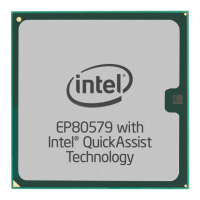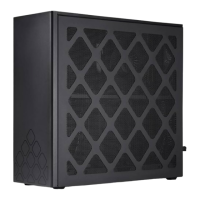Intel
®
EP80579 Integrated Processor Product Line—IEEE 1588-2008 Hardware Assist Interface
Intel
®
EP80579 Integrated Processor Product Line
Platform Design Guide May 2010
229 Order Number: 320068-005US
20.0 IEEE 1588-2008 Hardware Assist Interface
IEEE 1588-2008 is a precision clock synchronization standard for network
measurement and control systems. IEEE 1588-2008 was intended to be used in full-
duplex LAN (Local Area Network) topologies, for applications such as industrial
automation in factories and processing plants within a single building.
The main objective of IEEE 1588-2008 is to accurately synchronize independent clocks,
running on separate nodes of a network, to a grandmaster clock.
The EP80579 provides hardware assist for GbE0, GbE1, CAN0, CAN1 and the two
auxiliary input signals, master and slave mode. The master device holds the
grandmaster clock and the slaves synchronize to the master. The hardware also
supports the following outputs:
• transmit trigger
• received trigger
• pulse per second
•test signal
The accuracy of the system depends on the topology of the network and the software
architecture. Microseconds to sub-microsecond accuracy is possible in real applications.
The topology consists of assigning one of the nodes to become a master. The master
holds the grandmaster clock, and the other nodes become slaves within the network.
The slaves attempt to synchronize to the grandmaster. The main objective of the slaves
is to be in sync with the master, via the IEEE 1588-2008 protocol.
A classic example of IEEE 1588-2008 is to synchronize clocks in a school to the main
grandmaster clock. Figure 142 shows an example of a system with clocks running in a
network that supports IEEE 1588-2008 and another school network that does not
support IEEE 1588-2008.

